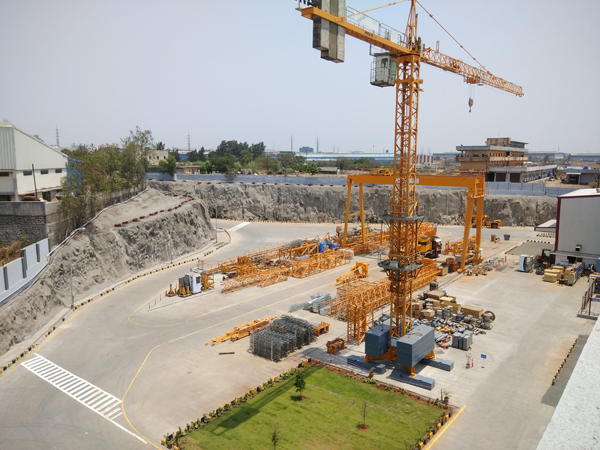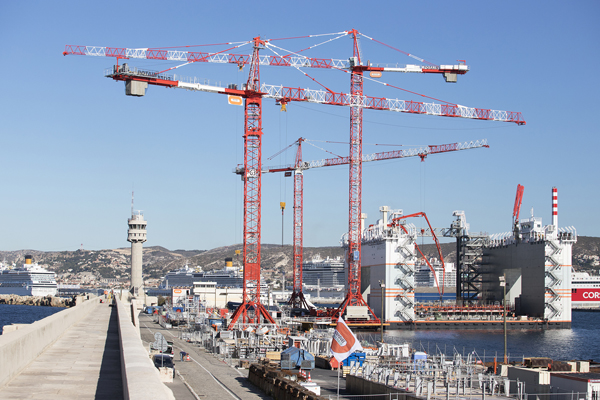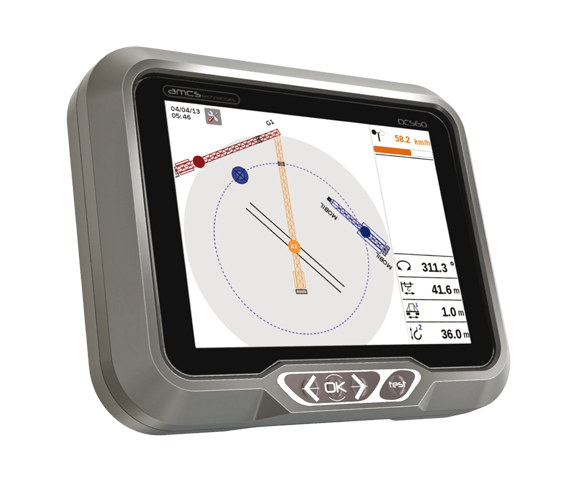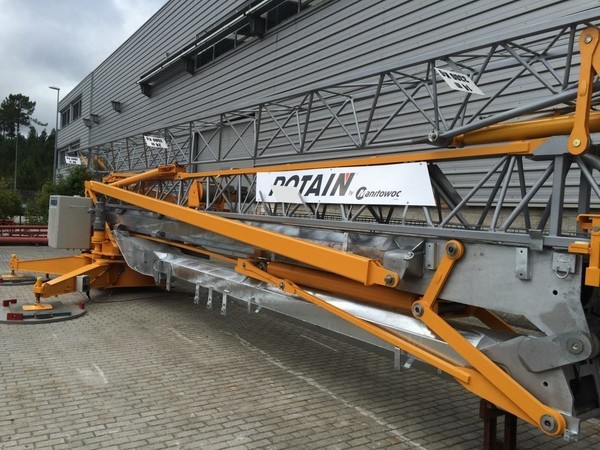The Middle East region is going through some economic changes and there has been massive projects revealed and announced by head of states. On September 16 Abu Dhabi’s Crown Prince Sheikh Mohammed bin Zayed announced the budget and initial round of projects for the Ghadan (Tomorrow) 2021 strategy, a three-year plan designed to further reduce the emirate’s dependence on oil revenues.
Ghadan 21 – which means ‘tomorrow’ in English – is the banner name for a series of reforms aimed at stimulating investment, creating jobs, encouraging innovation and improving the overall quality of life for citizens. The plan will feature 50 initiatives focused on four areas – business and investment, society, knowledge and innovation, and lifestyle. According to Gulf News, A Dh50 billion three-year development accelerator programme for Abu Dhabi has been approved. The announcement was made on Twitter by His Highness Shaikh Mohammad Bin Zayed Al Nahyan, Abu Dhabi Crown Prince and Deputy Supreme Commander of the UAE Armed Forces. Shaikh Mohammad said that the programme, dubbed Ghadan 21 (Arabic for Tomorrow), was approved during a meeting with members of the Abu Dhabi Executive Committee.
“We have approved a three-year, Dh50 billion budget for the Abu Dhabi Government Accelerators Program Ghadan 21. Dh20 billion will be allocated to the 2019 development package,” Shaikh Mohammad tweeted.
Approved on September 16 by His Highness Sheikh Mohamed bin Zayed Al Nahyan, the Crown Prince of Abu Dhabi and Deputy Supreme Commander of the UAE Armed Forces, the work on Ghadan 2021 (translated to Tomorrow 2021 in English) will commence from the beginning of 2019.
Push for economic reform
According to The National, the plan has 50 initiatives to stimulate investment and job creation, including investment in the knowledge sector, the employment and education of Emiratis, and overall quality of life. It will slash red tape for businesses and build confidence in the emirate’s economy. Sheikh Saif bin Zayed, Deputy Prime Minister and Minister of Interior, and Sheikh Mansour bin Zayed, Deputy Prime Minister and Minister of Presidential Affairs, were among those present at the meeting. During the session, the Cabinet ratified an agreement on cultural exchange between the UAE and France, and an air transport agreement between the UAE and Belize, the UAE and the Marshall Islands and air services between the UAE and the Caribbean country of Grenada. Additionally, it approved agreements to promote and protect UAE investments with Kazakhstan and Costa Rica, and agreed that the Emirates join the 1997 Protocol of the International Convention for the Prevention of Air Pollution caused by ships.
Private sector – the key focus of business development in the Ghadan 2021 strategy
According to Oxford Business Group, Abu Dhabi has moved ahead with plans to bolster the emirate’s non-oil economy following the launch of a Dh50bn ($13.6bn) programme aimed at fast-tracking economic growth and social development. Key to the Ghadan initiative is the improvement of the emirate’s business environment, with a particular focus on facilitating greater private sector participation.
“To this end, the Abu Dhabi Executive Council – the body tasked with overseeing the programme – announced the establishment of a new business licence registration process, which should allow for the approval of 91% of commercial activities within five minutes. To support this, the Tajer licence, which allows operators to establish businesses without having a permanent office, has also been expanded to cover all nationalities and more than 1000 different commercial activities.
 Meanwhile, in terms of financing, officials announced that a credit guarantee programme will be established before the end of the year. Under this initiative, banks are expected to offer small and medium-sized businesses Dh10bn ($2.7bn) in funding over the next three years. This was coupled with the announcement that a new public-private partnership (PPP) law would soon be issued, and the initial tranche of these PPPs will be tendered in the first quarter next year, with up to Dh3bn ($816.9m) worth of projects in housing, infrastructure, energy and health care on offer. On this note, the Ghadan strategy is expected to generate opportunities for a range of service providers, with the construction and materials supply sectors in particular set to benefit from the uptick in projects forecast over the coming three years”.
Meanwhile, in terms of financing, officials announced that a credit guarantee programme will be established before the end of the year. Under this initiative, banks are expected to offer small and medium-sized businesses Dh10bn ($2.7bn) in funding over the next three years. This was coupled with the announcement that a new public-private partnership (PPP) law would soon be issued, and the initial tranche of these PPPs will be tendered in the first quarter next year, with up to Dh3bn ($816.9m) worth of projects in housing, infrastructure, energy and health care on offer. On this note, the Ghadan strategy is expected to generate opportunities for a range of service providers, with the construction and materials supply sectors in particular set to benefit from the uptick in projects forecast over the coming three years”.
Additionally, the government is also moving to support domestic services and materials suppliers, looking to adopt by early next year a new content policy giving preference to local suppliers in state tenders.
Innovation, Research & Development
According to the same report, another key feature of the programme is the facilitation of Abu Dhabi’s knowledge economy through a series of developments promoting innovation and research and development (R&D).
“Key to meeting these goals is the establishment of a new tech incubator, expected to open by the end of the year.
On top of developing local expertise and start-ups through cooperation with the private sector, the committee said the incubator will serve to increase Abu Dhabi’s attractiveness as a destination for tech-sector talent, and support industry-based R&D efforts. In terms of education, officials announced plans to add some 30,000 places to the emirate’s school capacity over the period, to be made up of 15,000 new students in private schools by 2021 and 15,000 in existing state schools by next year”.
Reaction from the market leaders
Walid El-Hindi, chief executive officer of Abu Dhabi-based developer Imkan, also voiced his support for the development strategy.
“We are delighted to learn of the Tomorrow 2021 reforms, which represent a further step towards strong economic diversification in the UAE,” he said.
“Our leadership’s long history of strategic initiatives represents their vision to create a capital city with diverse and robust sectors that go far beyond oil. We believe this is a strong step towards stimulating investment and further enhance the quality of life for Abu Dhabi’s residents and visitors.”
According to Weetas, the CEO of Al Dar Properties and Developments, one of the biggest Abu Dhabi-based developers, Talal Al Dhiyebi, commented on the strategy by saying that it reflects how the government seeks to accelerate the emirate’s economic growth and support its property market, adding that re-evaluating Abu Dhabi’s regulations and rules for infrastructure, residential and commercial projects is a significant step towards cutting the industry costs for both residents and investors.

Conclusion and summary: The reasons and the impact of this economic reform
According to a report by The National, this major initiative has been analyzed as following:
Why?Government officials were set a 90-day deadline to put economic reforms in motion as part of a Dh50 billion stimulus package over three years. The aim is to diversify Abu Dhabi beyond its reliance on oil income and cement its status as a growing world power.
What is the plan? Tomorrow 21 is a four-point plan to shape the economic future of the capital. The idea is to:
Stimulate business and investment, as well as promote economic development for the private sector and small businesses and support industry projects for the renewable energy sector.
Improve the lives of UAE nationals by launching new housing projects and providing quality education at an affordable cost.
Develop the knowledge sector by encouraging technology companies, supporting research and development centers, and training and developing talent and expertise.
Enhance the quality of life for all through improved cultural, sporting and transport initiatives
How will it affect jobs? The package will also include the creation of 10,000 new jobs for Emiratis in private and public sector over the next five years, while dual licenses will be available for companies in Abu Dhabi free zones to allow them to work outside free zones and bid for government tenders.
UAE leads Middle East countries by total hotel rooms in construction
The Middle East room construction total represented a 27.4% increase compared with October 2017 according to a report released by STR.
Rooms in construction in Africa, however, is down by 2.3% year over year.

The Middle East has a total of 423 hotels in the construction pipeline with 127, 177 keys which up by 27.4% compared to October 2017. Out of that, the region has 127 properties in final planning stage with 191 properties in the planning stage.
Africa has a total of 139 properties in construction with 65 of them on final planning stage and 121 in the planning phase.
UAE takes the lead spot among top MENA countries by rooms in constructions as of October 2018 with 54,371 keys making up 33.5% of the existing supply. Saudi Arabia takes second place with 48,224 rooms in construction but leads in terms of overall growth with the construction making up 51.4% of the existing supply as of October 2018.
Oman has 4,471 rooms in construction which tallies to 24.4% of the exiting supply while Egypt has 3,925 hotel rooms in construction which is 2.3% of the current supply.
Geda and Potain hoist partnership
Tower cranes from Potain will be fitted with the Geda Potain Cab-In internal mast crane operator hoist as part of a new supply agreement.
 With more than 100,000 cranes sold and more than 60 models produced in France, Italy, Portugal and China, Potain has evolved since its early beginnings in 1928 into a world market leader.
With more than 100,000 cranes sold and more than 60 models produced in France, Italy, Portugal and China, Potain has evolved since its early beginnings in 1928 into a world market leader.
The two traditional companies collaborated closely in the development of the Cab-In, exclusively for the Potain top slewing crane. It is based on the Geda 2 PK crane operator hoist that has been on the market for several years.
The new internal mast Cab-In enables a fast route to and from the cab. It fits inside all crane mast systems and is compatible with all Potain bases and drive frames. It also increases cost efficiency since the hoist remains permanently in the crane avoiding any additional transport costs and separate storage areas being required at the installation site.
The Cab-In is easily accessible and therefore easy to maintain and service. For additional safety Geda and Manitowoc have also developed a new, enclosed sliding landing level safety gate specifically for the hoist.
Johann Sailer, managing director of Geda, said, “Always with our eyes on the market, one of our ultimate objectives is to offer our customers tailor-made height access solutions. Our existing expertise in crane operator hoists along with the exclusive collaboration with Manitowoc, has enabled us to develop the Geda Potain Cab-In, a product that precisely reflects the customer’s requirements and which already meets the future legal regulations coming into force in France.”
The market launch of the Cab-In is planned for the end of 2018 but it already complies with French regulations, which from 2019 will make the installation of a crane operator hoist obligatory for every crane with a lifting height of 30m. The hoist also complies with regulations in the Netherlands and in Scandinavia.
Since the partnership Manitowoc and Geda have agreed a five-year deal for several hundred devices. Existing Potain cranes are to be retrofitted with the new hoist.
MEA smart city spending to double in next four years.
Annual technology spending by smart cities in the Middle Eastand Africa (MEA) region is expected to double from $1.3 billion to $2.7 billion in the next four years, according to KPMG’s ‘The Rise of Smart Cities – Digital Transformation in the Public Sector’ report.
Addressing the Digital Saudi 2030 conference in Riyadh, Dr Samer Abdallah, head of digital, KPMG Al Fozan & Partners in Saudi Arabia, revealed that Riyadh and Dubai are the top spenders when it comes to the development of smart cities.
“Given the Saudi government’s move to embrace digital transformation in alignment with Vision 2030 and the National Transformation Program 2020, information technology (IT) spending in the kingdom is slated to grow by at least 14 per cent each year,” he added.
Global smart city spending is set to accelerate from $81 billion in 2018 to $158 billion by 2022, Dr. Abdallah said, citing data from International Data Corporation.
The critical success factors of digital transformation of a city include an individual strategy, a holistic approach, and technology partners. This entails, however, several challenges such as cyber risk, technology gap, funding gap, and skills gap, which need to be appropriately addressed.
r. Abdallah advised assembling a dedicated cross-functional transformation team; describing the future vision of a smart city and deriving the related digital transformation projects; selecting appropriate technologies and detailing the business cases; identifying suitable partners among tech providers and co-investors, and executing consistently under one governance, and allowing for agile project delivery as the model to building a smart city.
In another presentation on ‘The Race to the Cloud: Present and the future of cloud platforms in fuelling Artificial Intelligence’, Dr. Abdallah said: “As Saudi Arabia makes great strides to build a sophisticated digital infrastructure under its Vision 2030, cloud computing will be a catalyst for digital transformation.”
Cloud computing will play a key role in promoting Artificial Intelligence (AI), and Machine Learning (ML) as these technologies are adopted across the broader business spectrum, he said, emphasising that companies will increasingly use AI-based cyber defence systems to detect and fend off any cyber-attacks.
Dr Abdallah pointed out that data analytics is becoming increasingly important tool for businesses, particularly Business Intelligence, as modern business problems require the analysis of large and complex combinations of data sources and sophisticated data models.
When The National was launched in 2008, the UAE was best known for spectacular building projects: an indoor ski slope, and islands shaped like continents and palms.
The rate of construction was so remarkable that an urban myth was told of a Keralite crane operator named Babu Sassi, whose crane on the Burj Dubai was so tall that he lived in the cab at the top.
At the time it was widely reported that Dubai was home to a quarter of the world’s 125,000 cranes. (It was actually no more than 2 per cent.)
Building and infrastructure would transform the landscape and social fabric of the country over the next decade in a manner made more astonishing by the backdrop of the 2008 global financial crisis and the Arab uprisings.
Boom time: a decade when the cranes ruled the UAE’s skies

When The National was launched in 2008, the UAE was best known for spectacular building projects: an indoor ski slope, and islands shaped like continents and palms.
The rate of construction was so remarkable that an urban myth was told of a Keralite crane operator named Babu Sassi, whose crane on the Burj Dubai was so tall that he lived in the cab at the top.
At the time it was widely reported that Dubai was home to a quarter of the world’s 125,000 cranes. (It was actually no more than 2 per cent.)
Building and infrastructure would transform the landscape and social fabric of the country over the next decade in a manner made more astonishing by the backdrop of the 2008 global financial crisis and the Arab uprisings.
The month The National was launched the Burj Dubai, as it was then known, reached level 160 and became the world’s tallest man-made structure. But within a few months, the effects of the 2008 global financial crisis hit.
Major infrastructure projects including the 52-kilometre Metro, enabled the city to withstand the effects of the crisis, says Dr Yasser Elsheshtawy, an architect, historian and former professor of architecture at the UAE University. It would open a year later in September, 2009.
“It is as if the city’s central nervous system is starting to shoot signals to previously detached limbs,” National reporter Hugh Naylor wrote at the time.
A 14.5km tramline followed in 2014, connecting Sheikh Zayed Road with the Marina and Palm Jumeirah, and even now construction continues with a 15km extension to the emirate’s next big project – Dubai 2020 Expo.
The city is undergoing a renewed inward focus, Dr Elsheshtawy says, with projects such as the new creekside retail area of Marsa Al Seef. After a proliferation of malls, Dubai is now tending towards pedestrian-friendly, open-air retail outlets.
“In many ways the past 10 years have witnessed a maturation of the real estate market and a closer focus on livability – walkable areas, outdoor places for social interaction and mixed-use developments,” Dr Elsheshtawy says.
“A proliferation of cultural projects moves the urban development paradigm away from a profit-making paradigm.
“While admirable in many ways, there is a clear tendency towards focusing on the higher-end of the market, and the immediate impact and relation to the existing city is sometimes not studied carefully.”
Abu Dhabi
In 2008, Abu Dhabi’s Urban Planning Council began to implement Plan 2030, starting the capital’s transformation from an island city to a city of islands.
When The National was launched, there were two crossings into the city – the Maqta and Mussaffah bridges. But there were plans for 32 more connecting the main island with Reem, Maryah, Yas and Saadiyat islands.
The 10-lane, 1.4km Sheikh Khalifa bridge to Saadiyat opened in October 2009, just before the first Formula One GP on Yas Island. It connected the Corniche to Saadiyat Island, Yas and the E11.
The mainland satellites of Khalifa City, Mohammed bin Zayed City and Mussaffah were linked to the Corniche by the 2010 opening of the 800-metre Sheikh Zayed Bridge, designed by celebrated British-Iraqi architect Zaha Hadid.
In late 2012, the much-anticipated, Dh5 billion Salam Street expressway, later to be renamed after the Founding Father, Sheikh Zayed, was completed after more than five years of construction.
Meanwhile, 80 metres underground, the Dh5.7bn Strategic Tunnel Enhancement Programme was under way. With 91km of sewers, it is one of the longest gravity-driven wastewater tunnels in the world.
Changes were not without growing pains. In its early years, The National reported extensively on the effects of the Salam Street tunnel building and another infrastructural innovation – paid parking. The Mawaqif paid parking scheme was introduced in October 2009. As parking lots were plotted out, drivers spent evenings circling for hours.
“It wasn’t ever intended to be a revenue-generating operation. It was a way to get all these cars off the streets,” says Dr Jane Bristol-Rhys, an associate professor of anthropology at Zayed University.
In the Western Region, later renamed Al Dhafra, life improved with the upgrade of the 327km Mafraq-Ghweifat motorway to the Saudi border.
In 2014, the region launched the country’s first railway and commercial operations began on the 264km line from the Shah oil and gasfields to Ruwais port. Plans for a trans-Gulf passenger line were held.
Running in the opposite direction, from sea to desert, is a water pipeline to the 21 billion litre underground reservoir in the Liwa desert near the Empty Quarter. The Dh1.6bn project, finished in January, is the world’s largest reserve of high-quality desalinated water.
End.
Sources:
http://www.constructionweekonline.com/article-50278-property-developers-hail-abu-dhabis-5bn-ghadan-2021-strategy/https://oxfordbusinessgroup.com/news/launch-diversification-strategy-pushes-abu-dhabi-towards-development-goalshttp://english.alarabiya.net/en/News/gulf/2018/09/16/Abu-Dhabi-crown-prince-reveals-Tomorrow-2021-plan-to-push-economic-reform-.htmlhttps://www.thenational.ae/uae/government/tomorrow-2021-new-drive-to-develop-start-up-businesses-in-abu-dhabi-unveiled-1.773753https://www.stlucianewsonline.com/discontinuation-of-private-sector-essential-services/https://distributed.com/news/how-blockchain-innovation-can-help-cost-efficiency-construction-industry/https://www.thenational.ae/uae/government/the-uae-explained-what-are-the-new-plans-for-the-economy-and-why-1.771143https://gulfnews.com/uae/government/dh50-billion-development-plan-announced-for-abu-dhabi-1.2278929https://www.weetas.com/gccnews/developers-praise-ghadan-21/http://www.hoteliermiddleeast.com/34582-uae-leads-middle-east-countries-by-total-hotel-rooms-in-construction/https://www.khl.com/access-international/geda-and-potain-hoist-partnership-/133904.articlehttp://www.constructionweekonline.com/article-50741-mea-smart-city-spending-to-double-in-next-four-years/


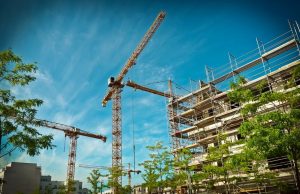

 Key question: Is this the right time for eco-friendly construction in the UAE?
Key question: Is this the right time for eco-friendly construction in the UAE?

